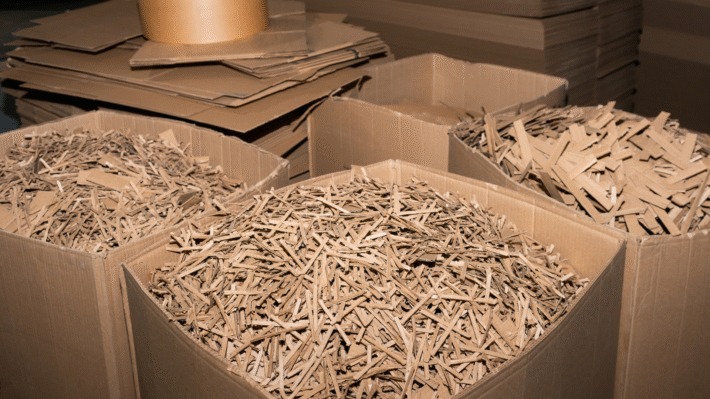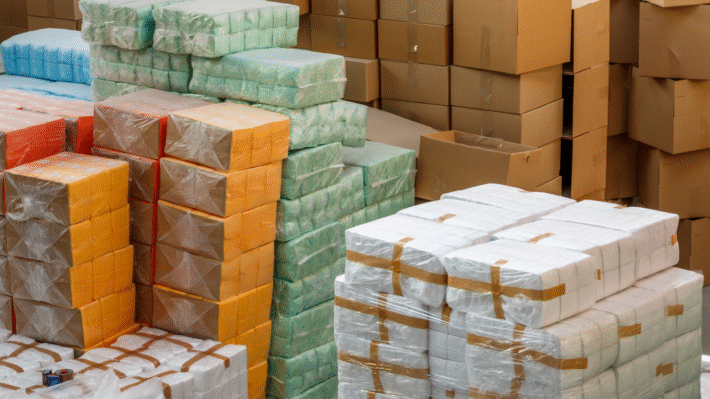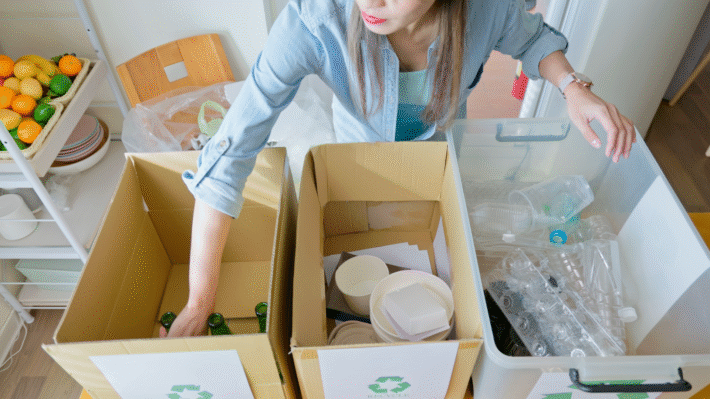Minimize Waste: Maximize Product Yield with Efficient Catalytic Processes

In our world, minimizing waste and byproducts is more important than ever. Traditional chemical processes have served us well but often at an environmental and economic cost. Imagine a world where every process maximizes its potential—producing the most with the least waste. That’s not just a dream; it’s a vision we’re building, thanks to sustainable synthesis and the magic of catalysis. Catalysis is a powerful tool, offering an elegant solution by pushing chemical reactions to be cleaner and more efficient. As we dive into this fascinating topic, we’ll explore how these catalytic processes not only protect our planet but also create a more efficient chemical synthesis for a brighter future.
The Impact of Waste in Chemical Synthesis
Understanding Traditional vs. Sustainable Synthesis
Identifying Waste in Traditional Synthesis
Traditional synthesis often results in waste. This waste can come from various sources like leftover materials or energy that isn’t used well. Think of it like leaving the lights on when nobody’s in the room. Not only does it waste resources, but it can also be harmful to the environment. You might see this waste as smoke from a factory or leftover chemicals that are thrown away.
Benefits of Sustainable Synthesis
Sustainable synthesis focuses on using every bit of material and energy to create less waste. This is like riding your bike instead of driving a car – it’s cleaner and more efficient. By using smarter methods, sustainable synthesis reduces pollution and helps save money. This approach also helps create a healthier planet by using less harmful materials and making processes cleaner and safer.
Environmental and Economic Consequences
Pollution from Waste
When waste is not managed well, it leads to pollution. This can mean dirty air and water which can hurt animals and plants. Factories releasing chemicals into rivers or smoke into the air are examples of how waste can pollute the environment. This pollution doesn’t just harm nature; it affects our health too.
Economic Costs of Inefficiencies
Inefficient processes lead to financial losses. Think of a leaky faucet, constantly dripping water. That’s money going down the drain. In the same way, when factories waste materials, they lose money which they could save by being more efficient. This is why sustainable methods are so important. They not only save the planet but also help companies save dollars.
Catalysis: A Bright Solution
How Catalysts Reduce Waste
Catalysts act like magic helpers. They speed up chemical reactions and help use less energy and resources. When a catalyst is used, the reaction happens faster and makes more good stuff while creating less waste. It’s like having a coach who helps you run faster without getting tired.
Examples of Catalytic Solutions
There are many cool ways catalysts work. For instance, in cars, catalysts help turn bad gasses into cleaner ones before they come out of the tailpipe. In factories, they help make plastics and medicines with less waste. By using catalysts, these industries can be more efficient and greener. For more examples of catalytic solutions, check this link.
Principles of Minimizing Waste
Let’s dive into the world of chemical synthesis where minimizing waste is the hero of our story. Smart folks around the world are working to make sure we use every little bit of what we have. This isn’t just about saving money; it’s about saving the planet!
Key Concepts in Green Chemistry
Our first stop is a place called Green Chemistry. This is where smart chemistry happens. We want every atom to be useful and nothing to be thrown away.
Atom Economy Explained
Atom Economy is all about using every part of your ingredients. Imagine baking a cake where every crumb is eaten – that’s what good atom economy feels like. It means less waste and more of what we need. Find out more about the importance of atom economy here.
The Power of Prevention
Prevention is the first step to victory. Before making anything, we ask, “How can we make sure there’s no mess?” Instead of cleaning up after, green chemistry thinks ahead. It finds ways to not create waste in the first place. Check this out to see how smart planning helps here.
Maximizing Product Yield
Getting the most out of what you have is the name of the game here. It’s about making sure nothing is wasted and we get a bang for our buck.
Choosing the Right Catalyst
A catalyst is like a magic helper. It makes things happen faster and better. Picking the right one is key to making sure everything turns out great. If you get the picks right, your work becomes easier. Learn more about catalysts here.
Optimizing Reaction Conditions
Reaction Conditions means how things like temperature or pressure are set during a reaction. Optimizing these conditions is like setting a perfect oven temperature for cookies. Get it wrong, and you might end up with burnt snacks. Make it right, and you get perfect treats every time. Find out how adjustments can change outcomes here.
Process Intensification Techniques
Now, let’s look at ideas that make everything quicker and smarter. These techniques are all about squeezing the most out of everything.
The Benefits of Continuous Flow
Continuous flow is like a river that never stops. In chemistry, it means reactions are happening all the time, without stopping and starting. This is super efficient and saves lots of time and energy. Discover how this flowing method wins here.
Integrating Processes for Efficiency
Think about combining two fun things, like a pizza party and a movie night. Integrating processes is just like that. It saves time and energy by bringing things together in one go. Instead of doing everything separately, efficiency is like having fun with all your friends at one big party. Find out more about efficient integration here.
This journey through minimizing waste principles teaches us that being smart and thinking ahead helps everyone. Together, we can make sure chemistry is cool, clean, and clever!
Designing Efficient Catalysts
Designing efficient catalysts is a key step in minimizing waste and maximizing yield. Catalysts speed up chemical reactions without being used up themselves. There are different types of catalysts, each with unique advantages. Let’s explore these types, key design parameters, and recent advancements.
Types of Catalysts
Choosing the right type of catalyst is crucial. Let’s start with two popular kinds.
Homogeneous vs. Heterogeneous Catalysts
Homogeneous catalysts are in the same phase (like liquid) as the reactants. They mix uniformly and can be highly effective. Think of them like sugar dissolving in tea—everything mixes smoothly.
Heterogeneous catalysts are in a different phase from the reactants, like a solid catalyst with a liquid reactant. This is like using a tea strainer to hold tea leaves while you pour in hot water. These catalysts are easier to separate from the reactants, making them more recyclable.
Introducing Bio-Catalysts
Bio-catalysts are natural catalysts, usually enzymes. Enzymes are proteins that speed up reactions in living things. They’re gentle on the environment and can be very specific, like a key in a lock. When designing efficient catalysts, bio-catalysts can be a green choice, reducing waste by-products.
Key Parameters in Catalyst Design
Designing a good catalyst involves several important factors. Here are two of the main ones.
Catalyst Activity Explained
Catalyst activity means how fast a catalyst can make a reaction go. A highly active catalyst works quickly and efficiently. It’s like choosing a racehorse over a donkey for a race.
Importance of Recyclability
Recyclability is all about being able to use the catalyst again. The more recyclable a catalyst is, the less waste it creates. It’s like recycling paper instead of throwing it away—better for our world and our wallet.
Advancements in Catalyst Engineering
Catalyst engineering has seen many exciting developments. Let’s dive into a couple of them.
Nanonatalysis: The Future of Catalysis
Nanonatalysis involves using very tiny nanoparticles as catalysts. These little guys are so small, you can’t see them with the naked eye, but they’re very active. Because of their size, they have a lot of surface area, which makes them very good at catalyzing reactions efficiently.
Ingenious Designs: Bimetallic and Zeolites
Bimetallic catalysts use two metals together, which can work better than one. It’s like having two superheroes team up to save the day—they bring out the best in each other.
Zeolites are like tiny cages made of minerals. They can hold molecules in place while the reaction happens. This structure makes them highly selective and efficient. Imagine them as organized traffic controllers, directing molecules precisely where they need to go.
Understanding and improving these catalyst designs can significantly reduce waste in chemical synthesis and boost productivity. Explore more about catalytic advancements at Chemistry World.
By focusing on these elements, we can make chemical processes cleaner and greener, leading us to a more sustainable future.
An Overview of Catalysis Fundamentals
Comparing Homogeneous and Heterogeneous Catalysis
In the magical world of chemistry, homogeneous and heterogeneous catalysis are like two different styles of cooking.
- Homogeneous catalysts are like chefs who mix everything in one big pot. This means all ingredients, including the catalyst, are free to interact completely because they’re in the same phase. This can make getting the right flavor, or the right chemical reaction, much easier.
- Heterogeneous catalysts are more like grills or ovens. These are solid catalysts, and the molecules they work on are usually in a different phase, like a gas or liquid bubbling around them.
In simple terms, one mixes in and the other stays firm, helping the ingredients change into something new when they come into contact.
Read more about it at Chem LibreTexts.
Exploring Enzyme, Photo, and Electrocatalysis
But wait, there’s more! Catalysts aren’t just up to these two tricks. Enter enzymes, photochemistry, and electrocatalysis.
Enzymes are nature’s own little helpers. They’re proteins that speed along reactions in our bodies, like an expert guide leading through a maze.
- Photocatalysis involves light. When light hits a photocatalyst, it gives energy to make reactions happen, like sunlight on your solar-powered toy car.
- Electrocatalysis is about electricity. Imagine plugging in your mixer to whisk your ingredients faster and smoother.
These fantastic tools help us cook up all sorts of things with less waste and more efficiency.
Learn more about it at Royal Society of Chemistry.
Optimizing Mechanism and Selectivity
Now, how do we make sure our catalysts are doing a top-notch job? It’s about optimizing mechanism and selectivity. Think of this like fine-tuning your recipe.
- Mechanism optimization is figuring out exactly how a catalyst does what it does. What are the steps to changing a set of starting molecules into the ending product?
- Selectivity is about making sure you only get the product you want, not a kitchen full of things you didn’t expect.
By understanding and tweaking these steps, we make sure our reactions are as efficient and productive as possible.
For a deep dive about optimizing mechanisms, check out Science Direct.



